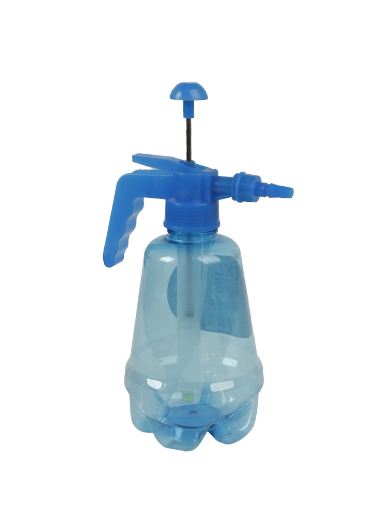It Is A Professional Sprayer Manufacturer Integrating Research, Design And Development.
+86-15824002009 Contact UsHandheld pressure spray bottles are widely used tools across various fields including gardening, cleaning, personal care, and industrial applications. Their convenience, portability, and ability to deliver a fine, controlled spray make them essential for many tasks. However, like any tool, these spray bottles do not last indefinitely. Over time, wear and tear, material degradation, and mechanical failure can affect their performance. Understanding how often to replace a handheld pressure spray bottle is important for ensuring effectiveness, safety, and hygiene.

A typical handheld pressure spray bottle consists of several key parts: a container or reservoir for holding liquid, a pump mechanism that generates pressure, a trigger or lever to release the spray, a nozzle to control the spray pattern, and various seals and valves to maintain pressure and prevent leaks.
The durability of a spray bottle depends largely on the materials used in its construction, the quality of its pump and nozzle components, and the nature of the liquids sprayed. Plastic bottles are common for their light weight and cost-effectiveness, but they are prone to cracking or warping under heavy use or exposure to harsh chemicals. Bottles made of more durable plastics or metals tend to last longer but may be heavier or more expensive.
One of the significant factors determining how often a handheld pressure spray bottle needs replacement is how frequently and intensively it is used. A bottle used daily for professional gardening or cleaning will naturally wear out faster than one used occasionally for household plants or minor tasks.
Repeated pumping causes mechanical stress on the internal components, especially the seals and valves, which can degrade over time. Similarly, frequent spraying can wear out the nozzle or clog it, reducing spray efficiency.
The kind of liquid sprayed has a major impact on the bottle's longevity. Water-based solutions, such as plain water or mild detergents, tend to be less harsh on materials. In contrast, chemicals like solvents, pesticides, or acids may corrode seals, degrade plastic, or cause blockages more quickly.
If the spray bottle is used for multiple liquids, it should be thoroughly cleaned between uses to prevent chemical reactions or residue buildup, which can reduce lifespan.
Higher quality materials generally extend the functional life of a handheld pressure spray bottle. Bottles made from thick, chemical-resistant plastics or stainless steel tend to resist cracks, leaks, and deformation longer than cheaper plastics.
Likewise, pump mechanisms and nozzles made of corrosion-resistant metals or durable polymers reduce failure risks. Investing in a quality bottle can mean less frequent replacement, especially for demanding uses.
Proper care significantly prolongs the life of a spray bottle. Regular cleaning of the reservoir, nozzle, and pump components prevents clogging and buildup. Lubricating moving parts, if recommended by the manufacturer, helps maintain smooth operation.
Storing the spray bottle away from direct sunlight, temperatures, or freezing conditions also protects it from material degradation. Neglecting maintenance accelerates wear and shortens replacement intervals.
Rather than relying solely on a fixed timeline, it is more practical to replace handheld pressure spray bottles based on their condition and performance. Key signs that a replacement is due include:
Leaks or Drips: Persistent leakage from the nozzle, pump, or container indicates seal failure or cracks that compromise pressure.
Reduced Spray Performance: If the spray pattern becomes uneven, weak, or inconsistent despite proper pumping, the nozzle or pump may be worn or clogged beyond repair.
Difficulty in Pumping: Increased resistance or failure to build pressure suggests mechanical wear in the pump mechanism.
Physical Damage: Cracks, warping, or discoloration of the container or components indicate material fatigue that can bring about failure.
Contamination: Residual odors, discoloration, or buildup that cannot be cleaned adequately may affect the sprayed liquid's purity and safety.
We will provide you with the latest product
information as soon as possible
